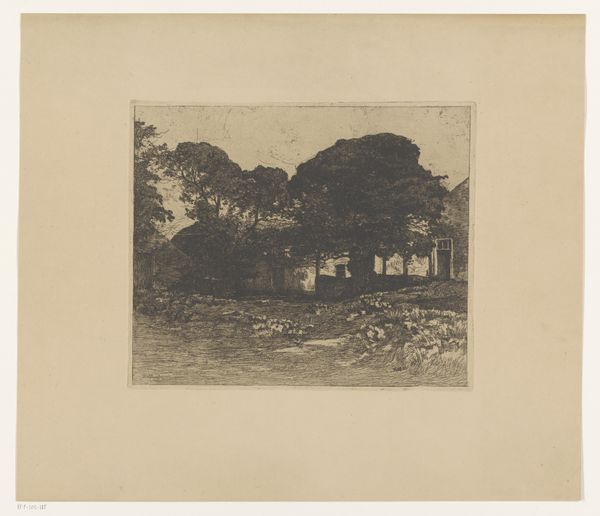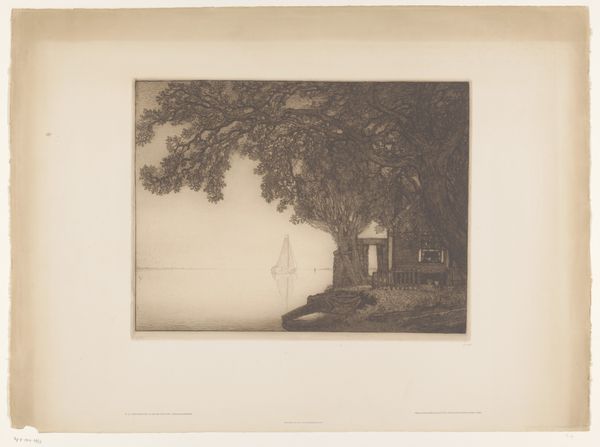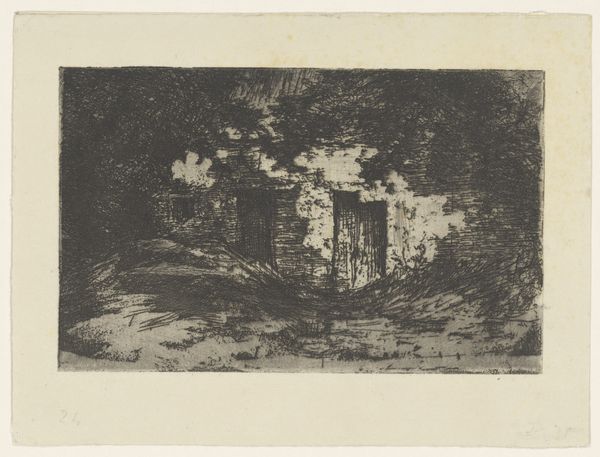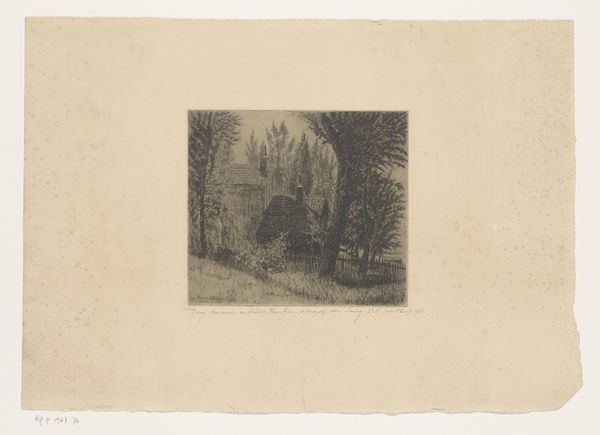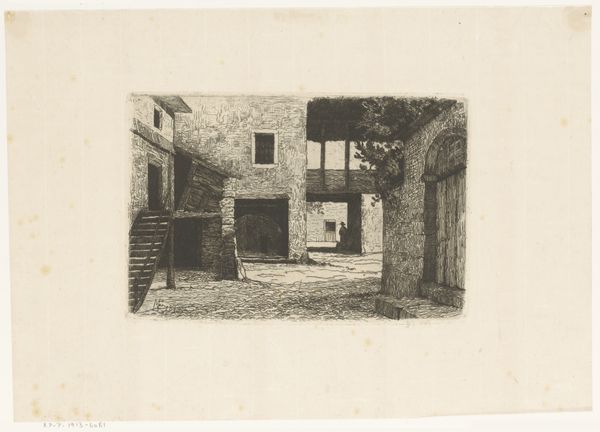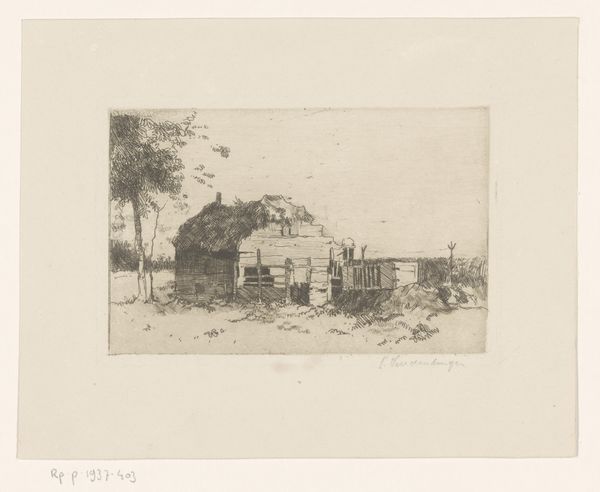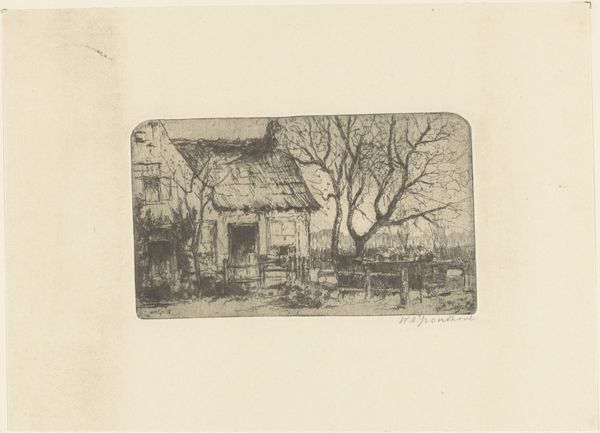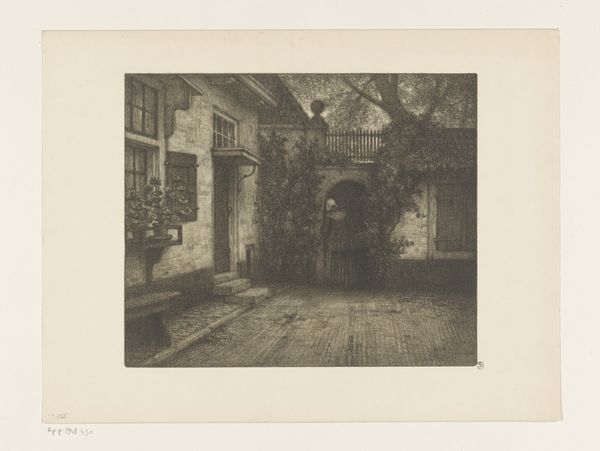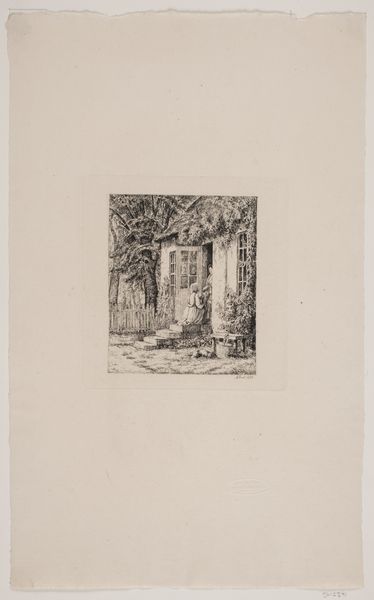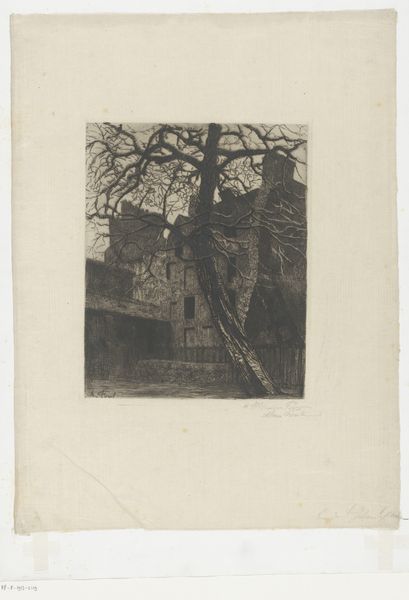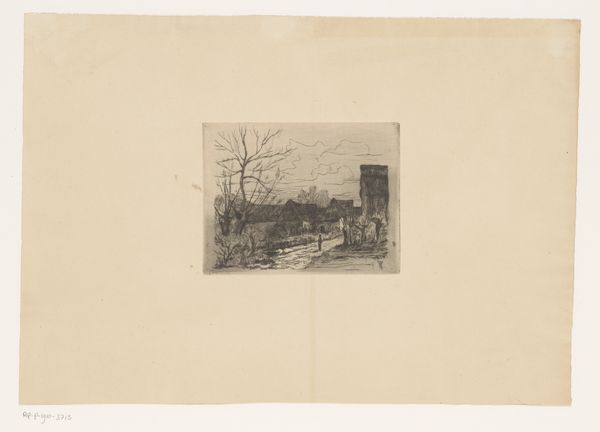
print, etching
# print
#
etching
#
landscape
#
realism
Dimensions: height 128 mm, width 202 mm
Copyright: Rijks Museum: Open Domain
Curator: This is "Gezicht op een gebouw gelegen aan Inner Bay," an etching created by Martin Hardie around 1905. It’s part of the Rijksmuseum collection. Editor: The immediate feeling is melancholic, almost haunting. The stark contrast between the building on the left and the dense trees creates this shadowy atmosphere. It's very textural too, you can see all the cross-hatching from the etching. Curator: Hardie was a master printmaker, so this focus on texture is entirely deliberate. The print aesthetic during the late 19th and early 20th century saw something of a revival, prized as the truest expression of the artist's hand. The composition, with the solid architectural form juxtaposed with the organic forms of nature, speaks to the changing urban landscape. Editor: Buildings are the cultural landscape--our homes, museums, institutions—but aren't trees as vital? To me, the tree line, with its repeated forms, symbolizes endurance, something much deeper than our brief habitation. Also, the figure of a woman looks to me almost like a silhouette. Curator: The shadowy figure also plays into a societal context. Consider the constraints of women’s lives at the time. This etching presents a figure relegated to the margins of social and domestic space. It serves to indicate the marginalization experienced by woman. The home, the natural environment, and the street remain distinctly demarcated by social space. Editor: Yes, but in terms of symbols, her location could be one of transformation. That transitional space represents freedom of interpretation. And, look, in many traditions, the threshold—a doorway or portal between one place and another—is always seen as the entry into a new dimension of the soul. The artist might have had very different interpretations in his mind. Curator: Certainly. It demonstrates how cultural production allows for and elicits different opinions depending on when we view a painting. Editor: Ultimately, it seems as though a dialogue between shadow and substance defines both architecture and humanity. The shadows speak just as eloquently, inviting each one of us to listen closely to what each says.
Comments
No comments
Be the first to comment and join the conversation on the ultimate creative platform.
